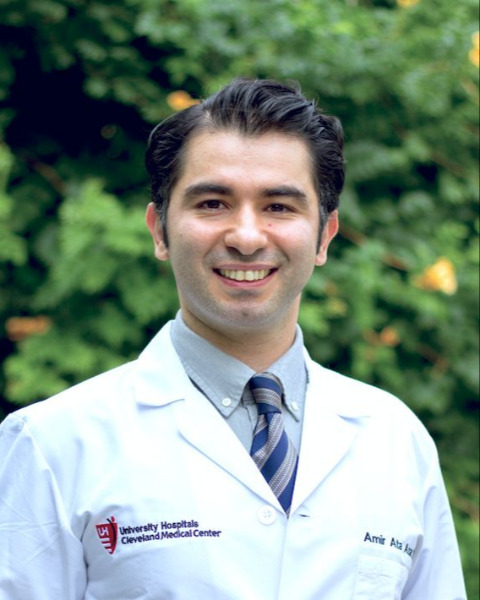SIR 2025
Peripheral Arterial Disease (PAD)
Traditional Poster
99 - Common femoral artery occlusive disease in chronic limb threatening ischemia: An analysis of patient outcomes and technical success with endovascular treatment.

Lucas Dobson, MD
Resident Physician
Mallinckrodt Institute of Radiology, United States- DB
Daniel Braga, MD
Assistant Professor of Radiology
Mount Sinai Medical Center, United States - AU
Alexander Ushinsky, MD
Assistant Professor of Radiology
Mallinckrodt Institute Radiology, United States 
Steven Sauk, MD, MS, RPVI
Section chief, Vascular and Interventional Radiology
Mallinckrodt Institute of Radiology, United States- CG
Carlos Guevara, MD
Associate Professor of Radiology
Mallinckrodt Institute of Radiology, United States 
Amir Ata Rahnemai, MD
Assistant Professor of Radiology
Washington University In St Louis, United States
Poster Presenter(s)
Author/Co-author(s)
To report safety, efficacy, and short/mid-term outcome of endovascular therapy for moderate to severe common femoral artery (CFA) occlusive disease.
Materials and Methods:
Demographics and pertinent medical history including indication for intervention were collected for patients who received intravascular therapy for CFA occlusive disease as part of their revascularization procedure from 2021 to 2024. The procedural details including, degree of CFA stenosis (30-50% = moderate and >50% = severe), other arteries treated, specific devices used, and complications were recorded. Technical success was defined by less than 25% residual stenosis at the end of the procedure. Records from follow up clinic visits were reviewed to identify the rate of symptom improvement, wound healing, need for endovascular re-intervention or amputations, as well as mortality.
Results:
A total of 53 patients were enrolled. In 70% of patients, CFA stenosis was the primary site of inflow disease. Degree of stenosis in this patient population was moderate in 43% of patients and severe in 57%. These patients were treated with combination of IVL (100%), DCB (91%), atherectomy (44%), POBA (4%), and stenting (4%). Technical success was achieved in 100% of patients with an average residual stenosis of 12% with a standard deviation of 7%. The complication rate was 2%. Repeat intervention to treated CFA was needed 4% of patients and the average time to re-intervention was 195 days. In patients with short distance claudication or rest pain, there was improvement of the symptoms in 94% of patients, and no patient went on to develop wound formation or need for amputation. In patients treated with lower extremity wounds, 61% had complete wound healing. There was no short-term (< 30 d) mortality and long-term ( >30d) mortality from a vascular cause was 2%.
Conclusion:
Endovascular therapy for CFA disease has demonstrated high technical and clinical success rates and is considered a safe first line alternative for patients who are not suitable candidates for surgery or those who are already undergoing endovascular treatment for other vascular issues. There is growing utilization of CFA intervention and this study supports the effectiveness and safety of endovascular management. Further studies including prospective studies are needed before a comparison is made to the gold standard of endarterectomy {1,2}.
.


.jpg)